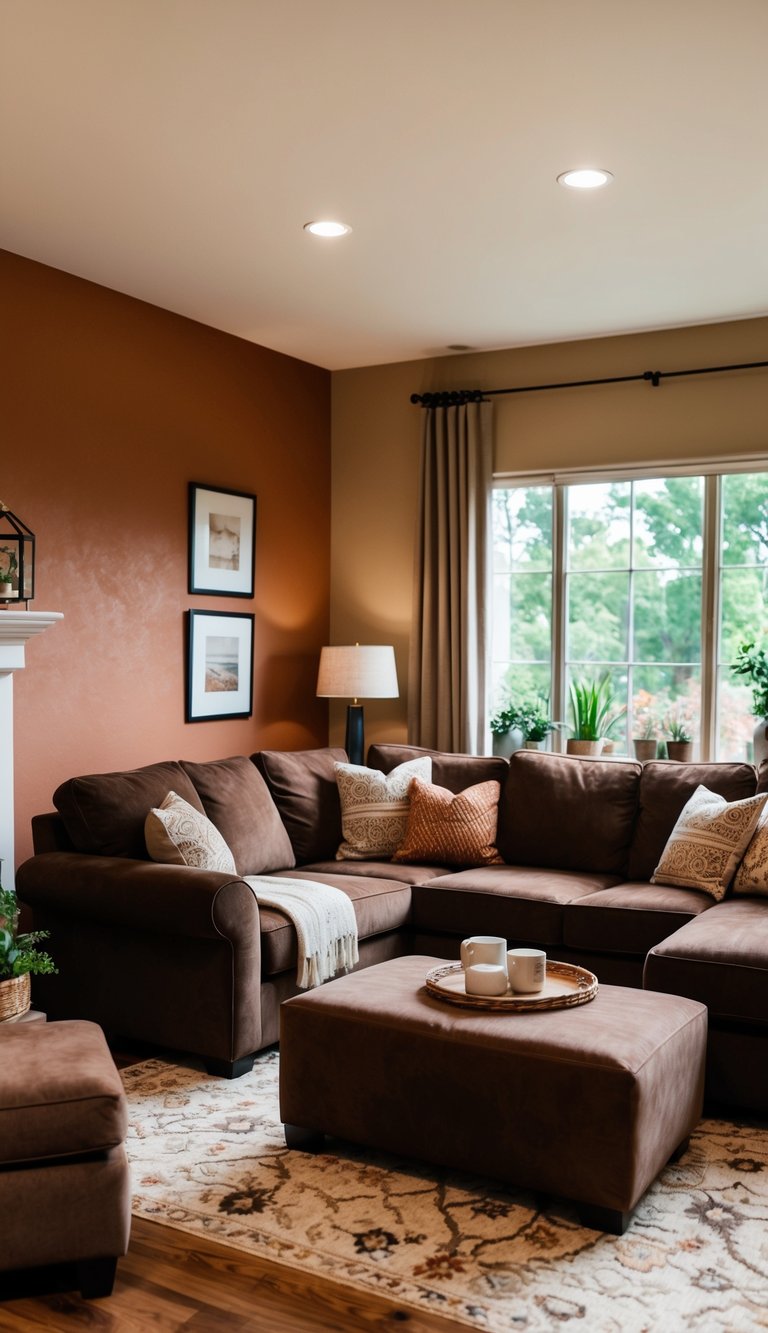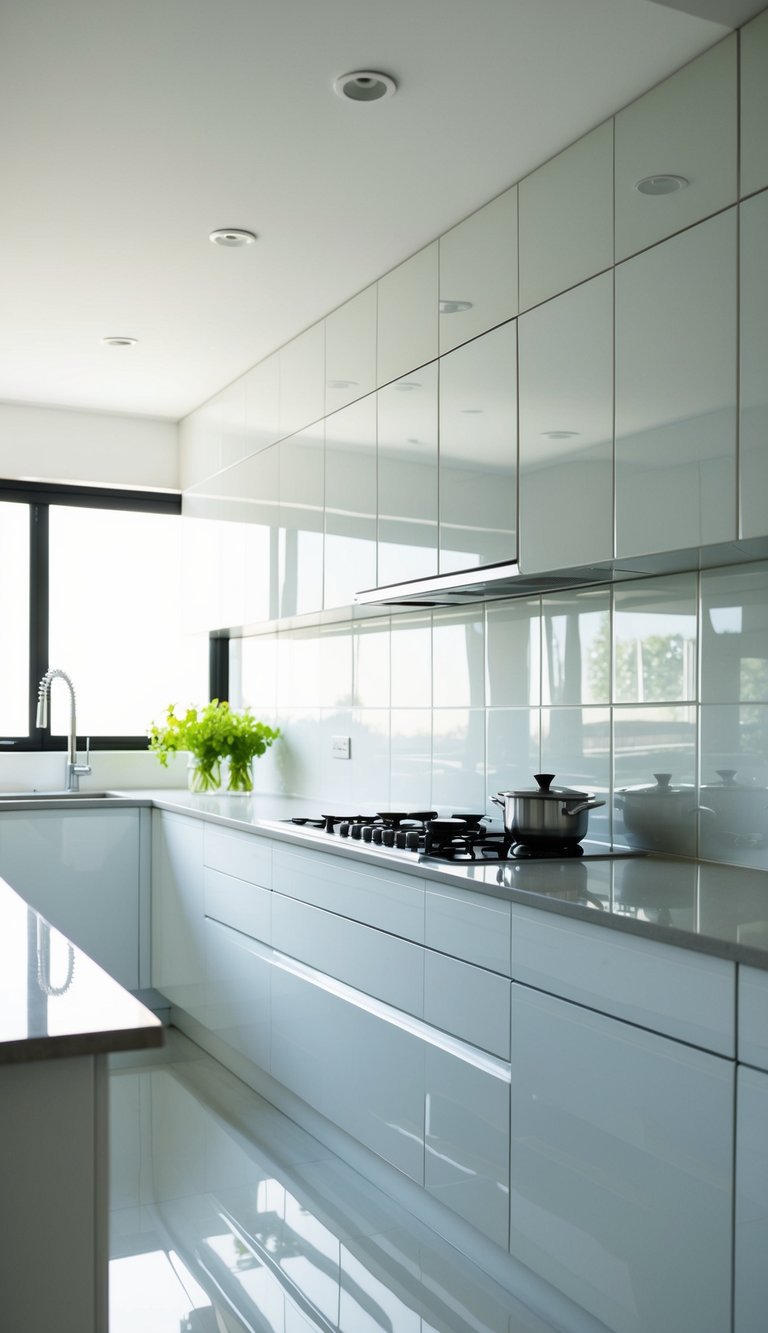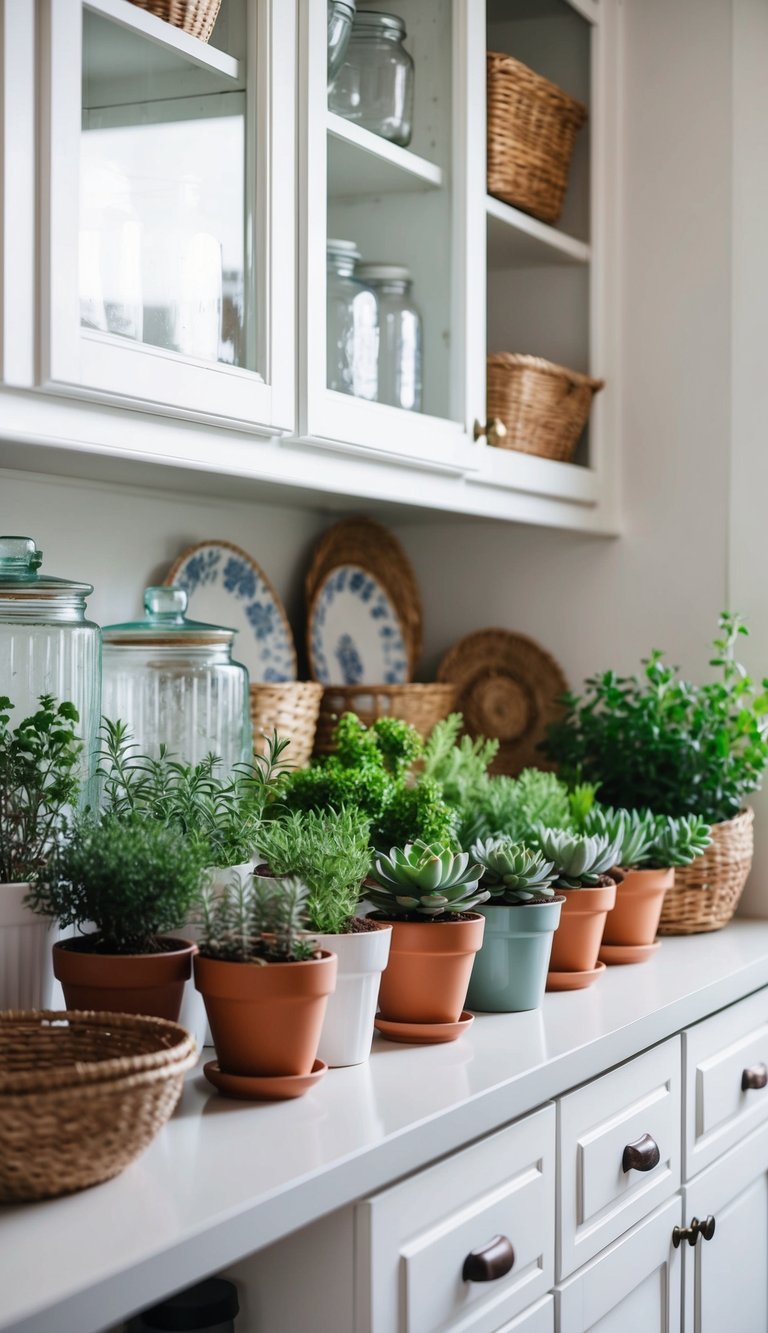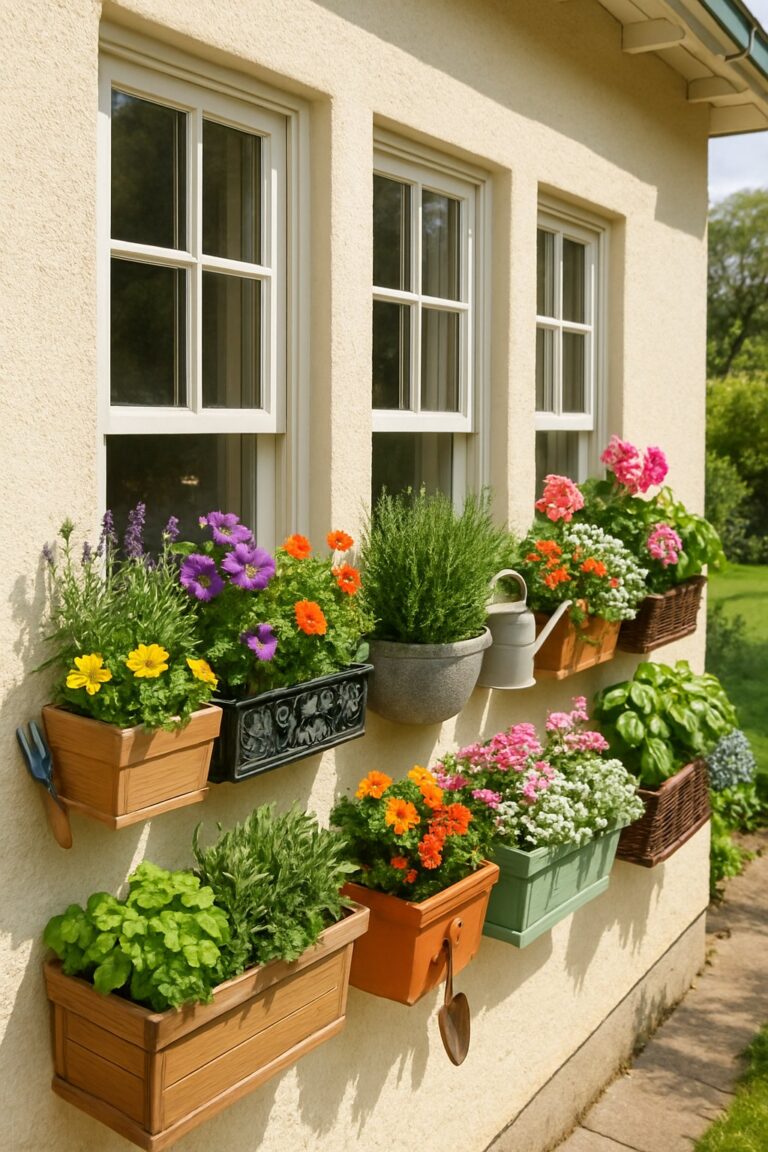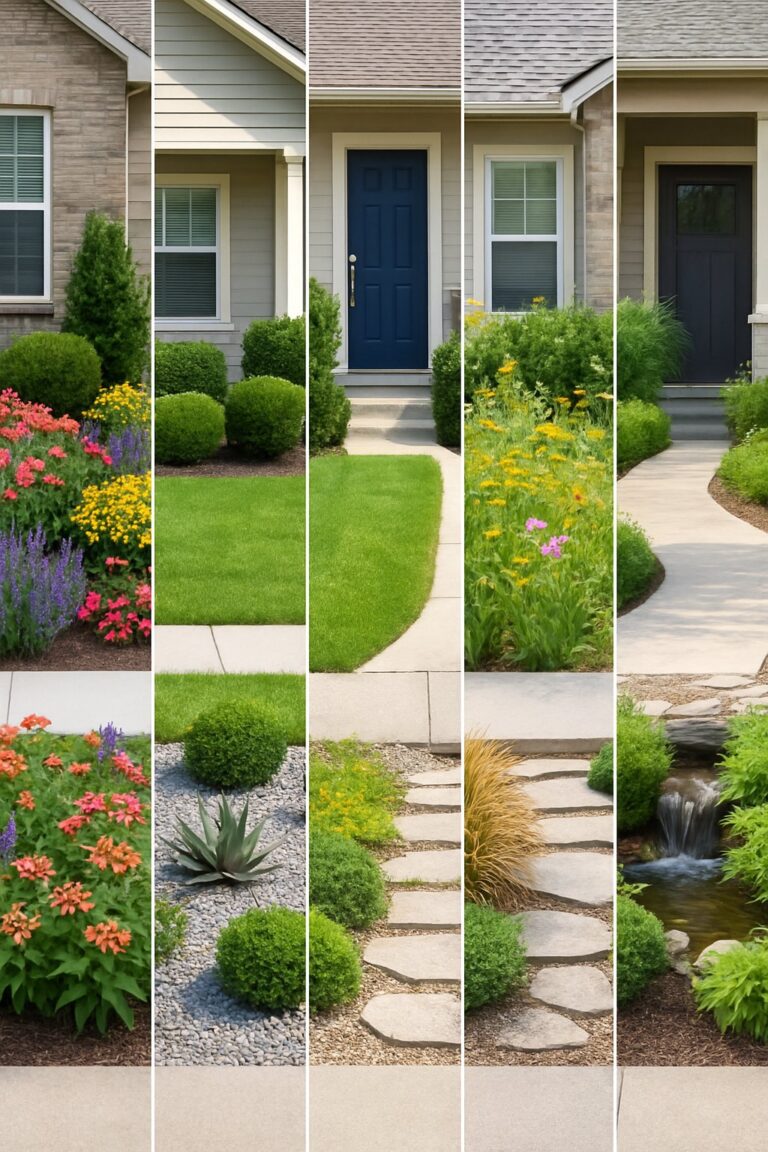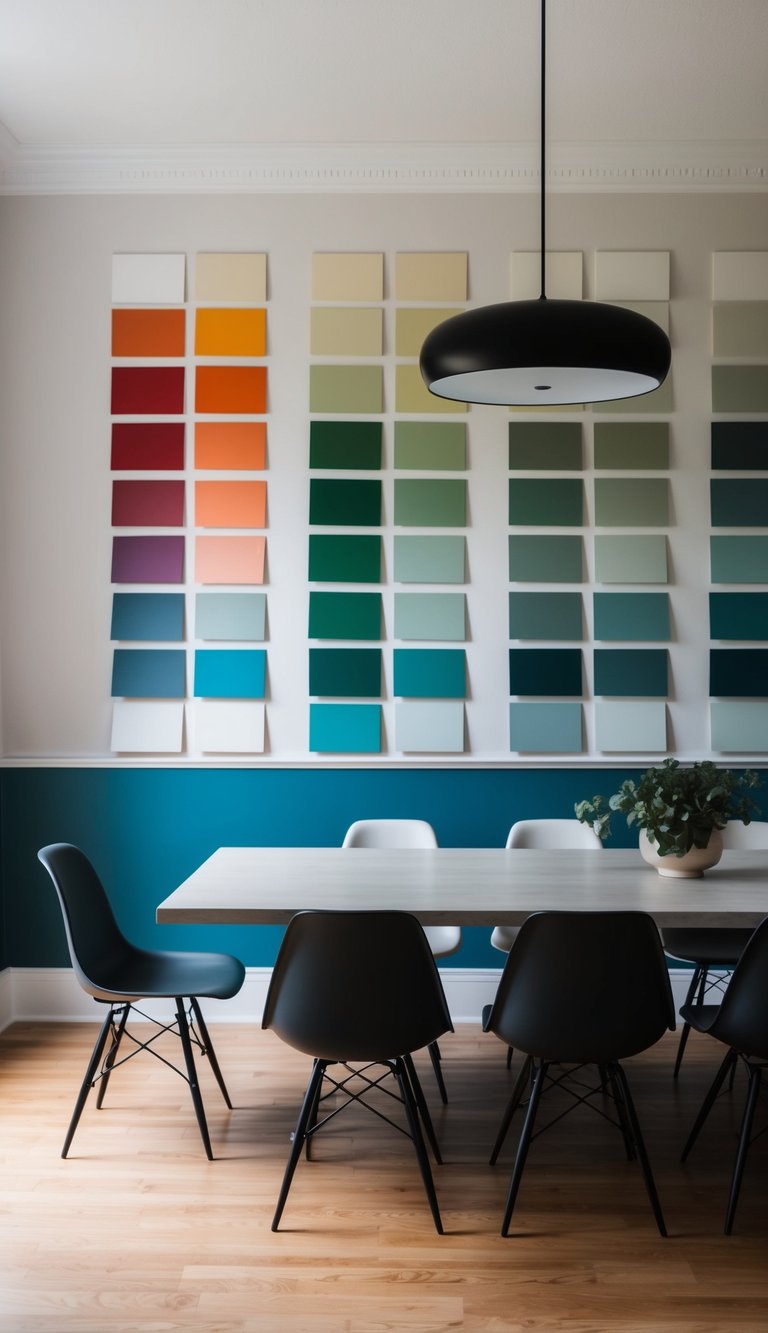Choosing the right paint color for your mudroom can make a big difference in how the space looks and feels. A good color can hide dirt, create a welcoming transition from outdoors to indoors, and set the tone for your home. These perfect mudroom paint color ideas balances practicality with style, making the space both functional and attractive.
Mudrooms serve as a buffer between the outside world and your clean home interior. Whether you prefer crisp whites, earthy greens, or cheerful yellows, there are many options that can work well in this high-traffic area. Your color choice might depend on your home’s overall style, the amount of natural light in the space, and how much dirt and mud typically come through your door.
1) Sunny Yellow for a Cheerful Entry
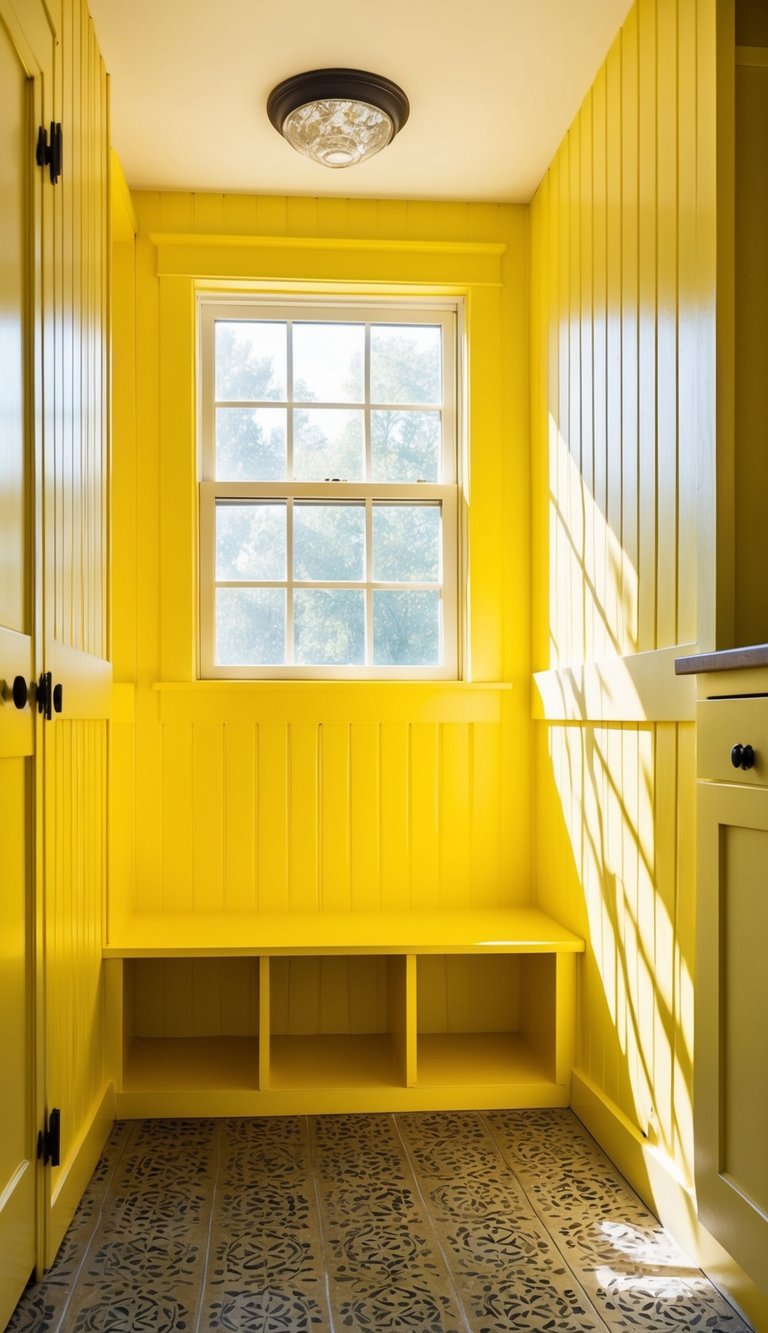
Yellow paint can transform your mudroom into a bright, welcoming space. This color brings warmth and energy to an area that often feels purely functional.
Think about how a sunny yellow might lift your mood when you come home on a rainy day. It’s like bringing a bit of sunshine indoors all year round.
You can go bold with a vibrant yellow or choose a softer, buttery tone for a more subtle effect. Either way, yellow creates a cheerful first impression when family and guests enter your home.
Yellow works well in mudrooms because it can actually hide dirt and scuffs better than you might expect. This makes it both practical and pretty for a high-traffic area.
Try pairing your yellow walls with white trim and natural wood elements for a balanced look. This combination helps the yellow stand out without overwhelming the space.
For small mudrooms, yellow can make the area feel more open and spacious. It reflects light well, brightening up corners that might otherwise feel dark or cramped.
Search for your mud room paint colors at Amazon
2) Crisp White for a Clean Look
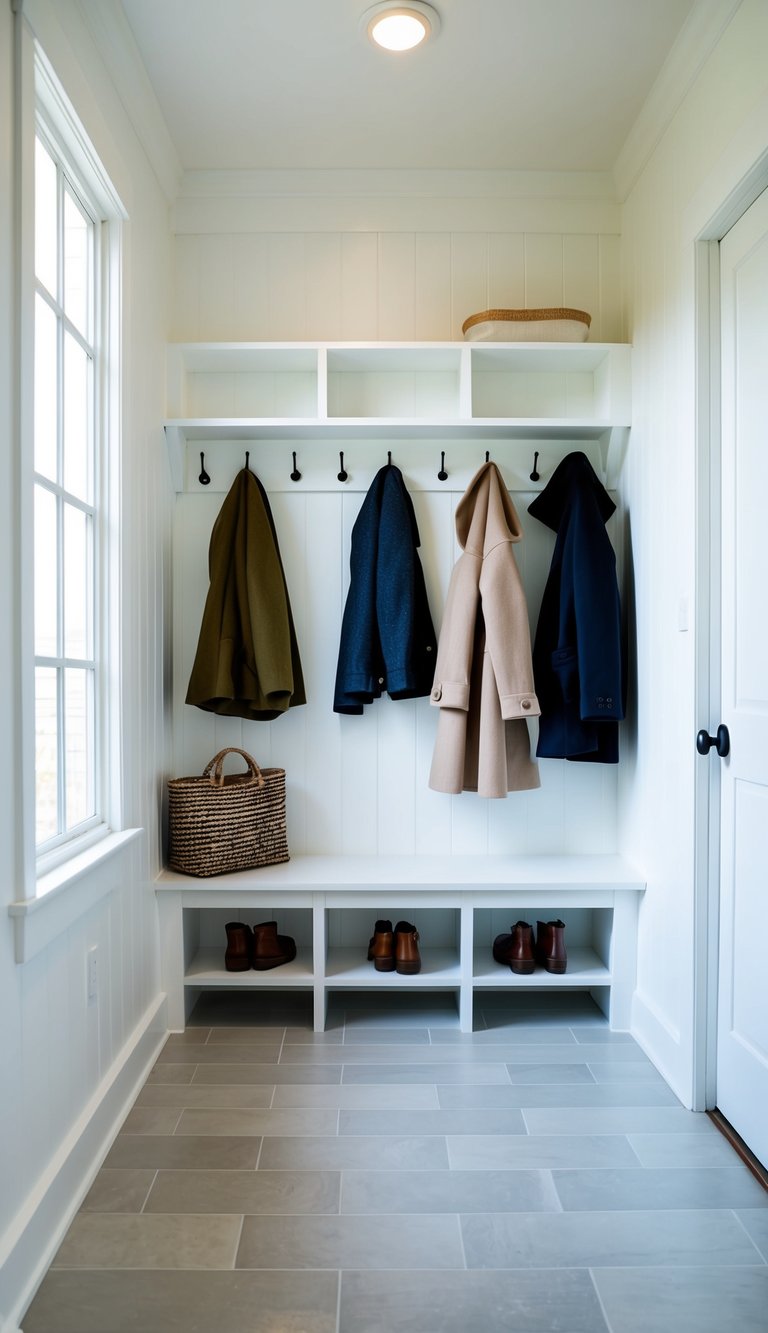
White paint gives your mudroom a fresh, clean appearance that never goes out of style. According to designers, Chantilly Lace OC-65 and Super White OC-152 are top choices for a super-crisp look on trim and walls.
A white mudroom creates the illusion of more space, making even small entryways feel open and airy. This is especially helpful in mudrooms that lack natural light or have limited square footage.
The clean backdrop makes your colorful belongings pop against the walls. Your kids’ backpacks, coats, and boots become natural accent pieces against the white canvas.
White is incredibly versatile and pairs well with any accent colors you might add through benches, hooks, or storage baskets. You can easily update your mudroom’s look by swapping out accessories without repainting.
Don’t worry about dirt showing more on white walls. Choose a washable paint finish like eggshell or satin that allows you to wipe away scuffs and marks easily.
For added interest, consider using white shiplap or beadboard on the lower half of your walls. This adds texture while maintaining the clean, bright aesthetic you’re after.
3) Forest Green for Nature Vibes

Forest green brings the calming essence of the outdoors into your mudroom. This rich, deep color creates a smooth transition between your garden and home interior.
Sherwin-Williams “Greenblack” is a popular choice that captures the tranquility of nature while adding a moody vibe. It’s dark enough to hide dirt and scuffs that are common in busy mudrooms.
You can pair forest green with natural wood elements for a rustic feel. Try adding wooden hooks, benches, or shelving to complete the nature-inspired look.
For extra dimension, consider using forest green beadboard as a backsplash behind your mudroom bench. This adds texture while keeping the space cohesive.
Forest green works well with both brass and matte black hardware. These metal accents pop against the dark background and add a touch of sophistication.
When painting your mudroom this color, remember that darker shades can make small spaces feel cozy rather than cramped. Add proper lighting to keep the space feeling welcoming and functional.
4) Light Pastel Blue for Serenity
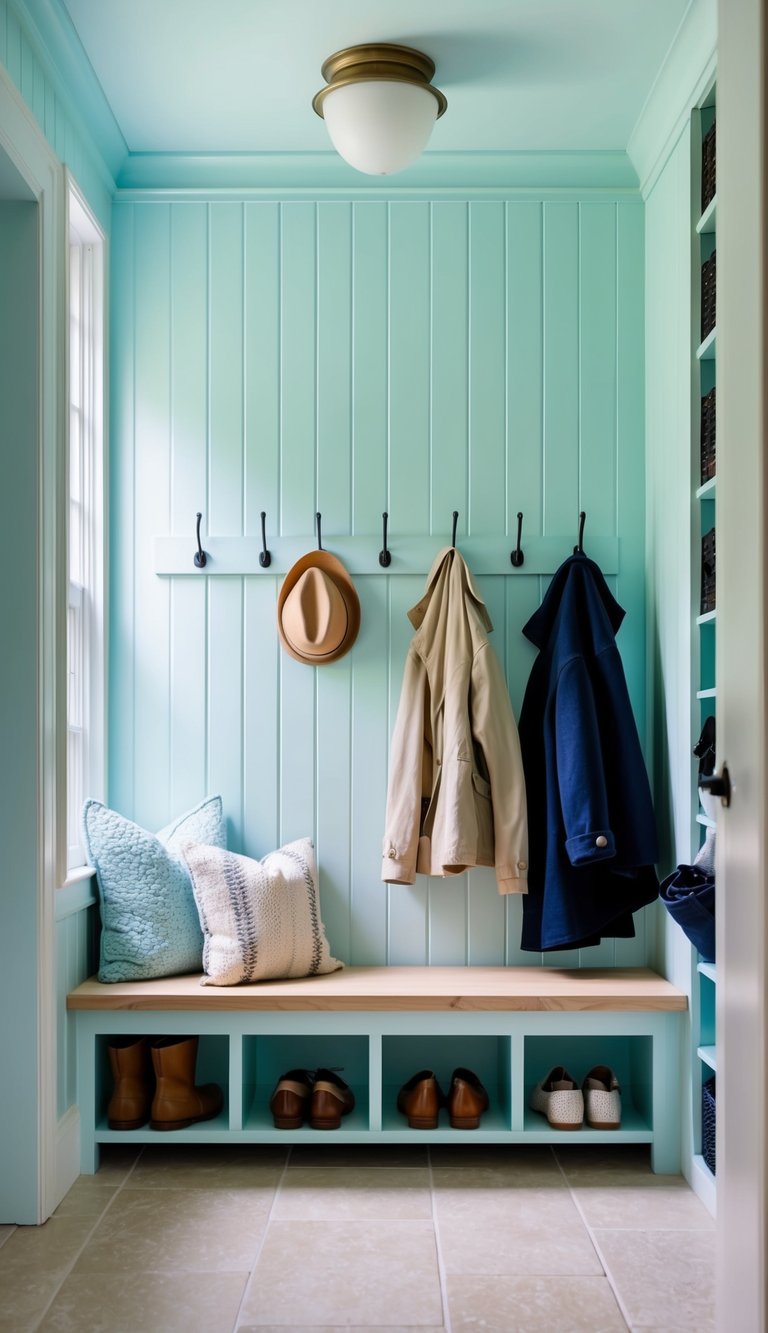
Light pastel blue brings a sense of calm to your mudroom. This soft, airy color creates a peaceful transition between the outdoors and your home. It works especially well in spaces that get natural light.
Think of shades like baby blue, powder blue, or soft sky blue. These gentle tones make your mudroom feel bigger and more open. They’re perfect if you want your entryway to feel fresh and inviting.
Pair pastel blue with white trim for a clean, classic look. Wood accents warm up the space and prevent it from feeling too cool or sterile.
This color works with many decorating styles. It fits coastal themes, farmhouse designs, or modern spaces equally well. Your storage cabinets will look crisp against this subtle backdrop.
For the best effect, choose a paint with a satin or eggshell finish. These finishes stand up to cleaning better than flat paint, which is important in high-traffic mudrooms.
Light blue also hides dirt and scuff marks better than pure white. You’ll appreciate this practical benefit when boots and coats come through during messy weather.
5) Bold Red Accent Wall
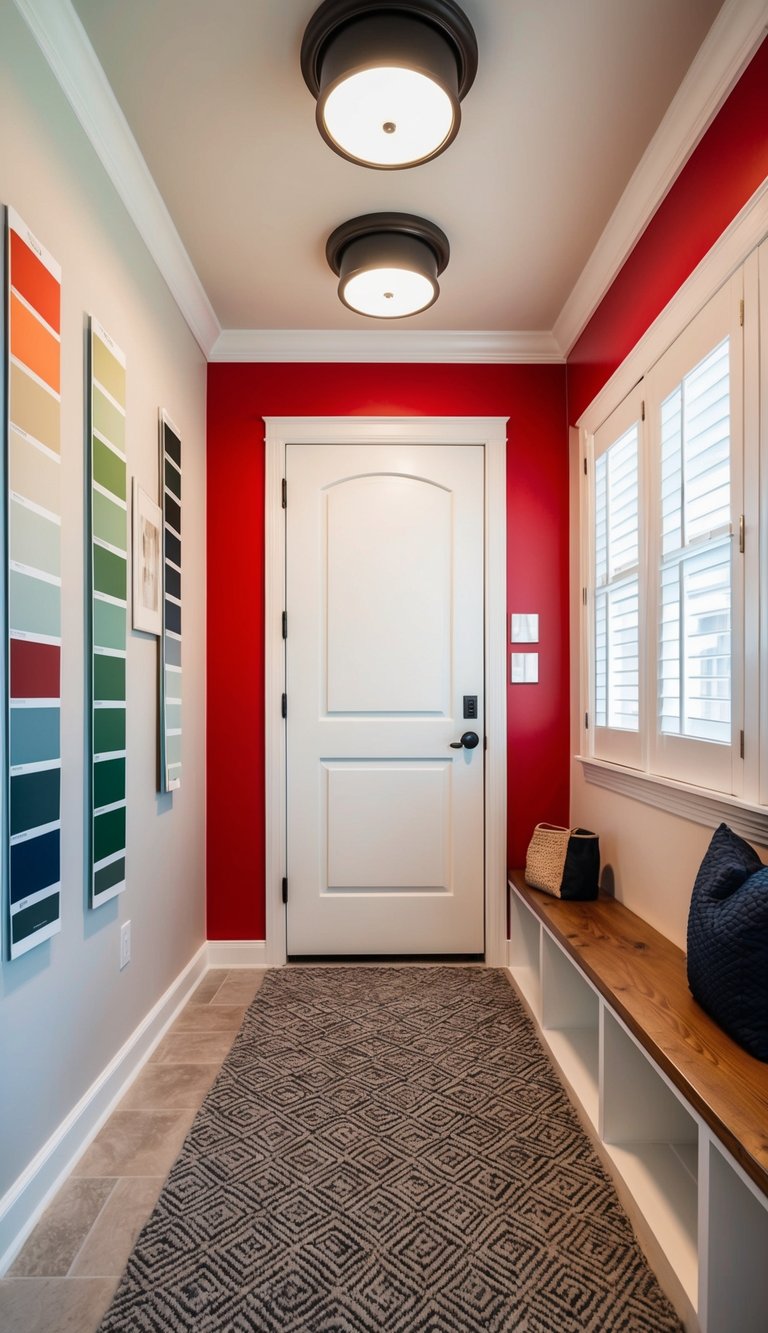
Red is a daring choice for a mudroom, but it can be super stylish when used on an accent wall. This bold color creates a warm, inviting feeling in your entryway space while hiding dirt and scuffs that come with high-traffic areas.
Consider using brick reds, mahogany, or rustic red tones that blend well with wood elements and neutral colors in your mudroom. These earthy reds aren’t as overwhelming as bright cherry reds but still make a statement.
You don’t need to commit to painting all walls red. Just choose one wall behind your storage bench or hooks to create a focal point. This approach gives you the pop of color without making the small space feel closed in.
Red pairs surprisingly well with other elements in your mudroom. It looks great with wood tones, taupe, and brown – colors often found in natural mudroom materials like baskets and benches.
If solid red feels too bold, try a red patterned wallpaper instead. A subtle red pattern can add interest while being more forgiving with dirt and marks from daily use.
6) Soft Beige for Warmth
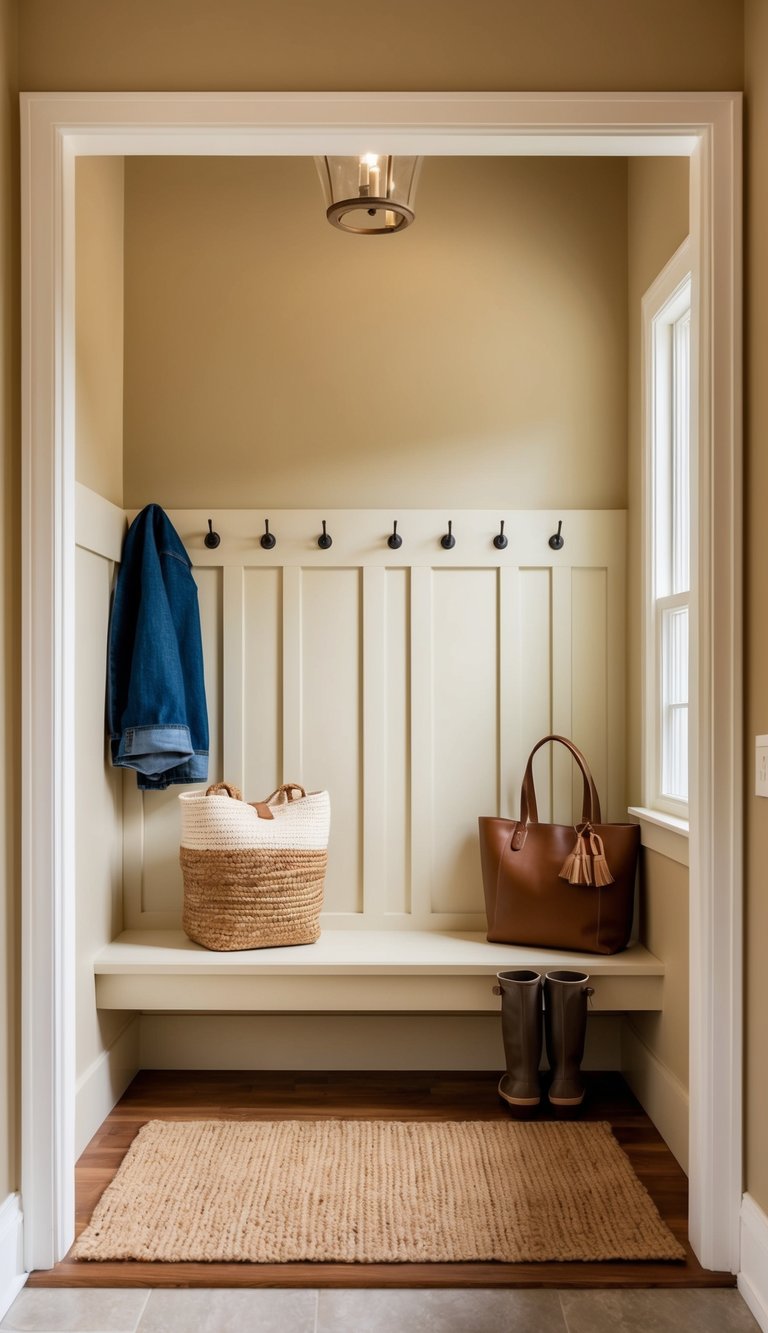
Looking for a color that feels cozy but still keeps things neutral? Soft beige might be your perfect mudroom match. This timeless shade creates a warm, welcoming space without overwhelming the senses.
Beige is making a big comeback in home design. Designers are moving away from cool grays and embracing these warmer neutrals that make spaces feel more inviting.
Options like Valspar’s Cuddle can add cheerful warmth to your mudroom. Or try something like Stony Ground, which has taupe undertones that give it more depth than a typical beige.
The beauty of soft beige is its versatility. You can easily add pops of color through accessories or furniture. Think teal, navy blue, or mustard yellow accents to bring energy to the space.
Beige also does a great job hiding dirt and scuffs – a huge plus for mudrooms! The warm undertones help disguise the everyday mess that comes with this high-traffic area.
Your beige mudroom can feel both practical and stylish. It creates a soothing transition between your home’s exterior and interior spaces while maintaining a polished look.
7) Charcoal Grey for Modern Edge

Charcoal grey brings a bold, modern vibe to your mudroom. This deep, rich color creates a sophisticated backdrop that can hide dirt and scuffs better than lighter colors.
Designers love charcoal grey because it pairs well with almost any accent color. You can add pops of color with bright hooks, benches, or storage bins against the dark walls.
Charcoal grey also works nicely with both cool and warm wood tones. Your wooden bench or shelving will stand out beautifully against this darker backdrop.
For a cohesive look, try painting your mudroom charcoal grey if your front door is a cool color like blue-green. This color combination creates a smooth transition from outdoors to indoors.
When choosing charcoal grey paint, look for options that have a slight blue or brown undertone to add depth. These subtle variations can make your space feel more interesting.
The dramatic backdrop of charcoal grey walls makes brass or gold hardware really shine. Consider updating your coat hooks or cabinet hardware to these warmer metals for a stylish contrast.
8) Bright Aqua for a Splash of Fun
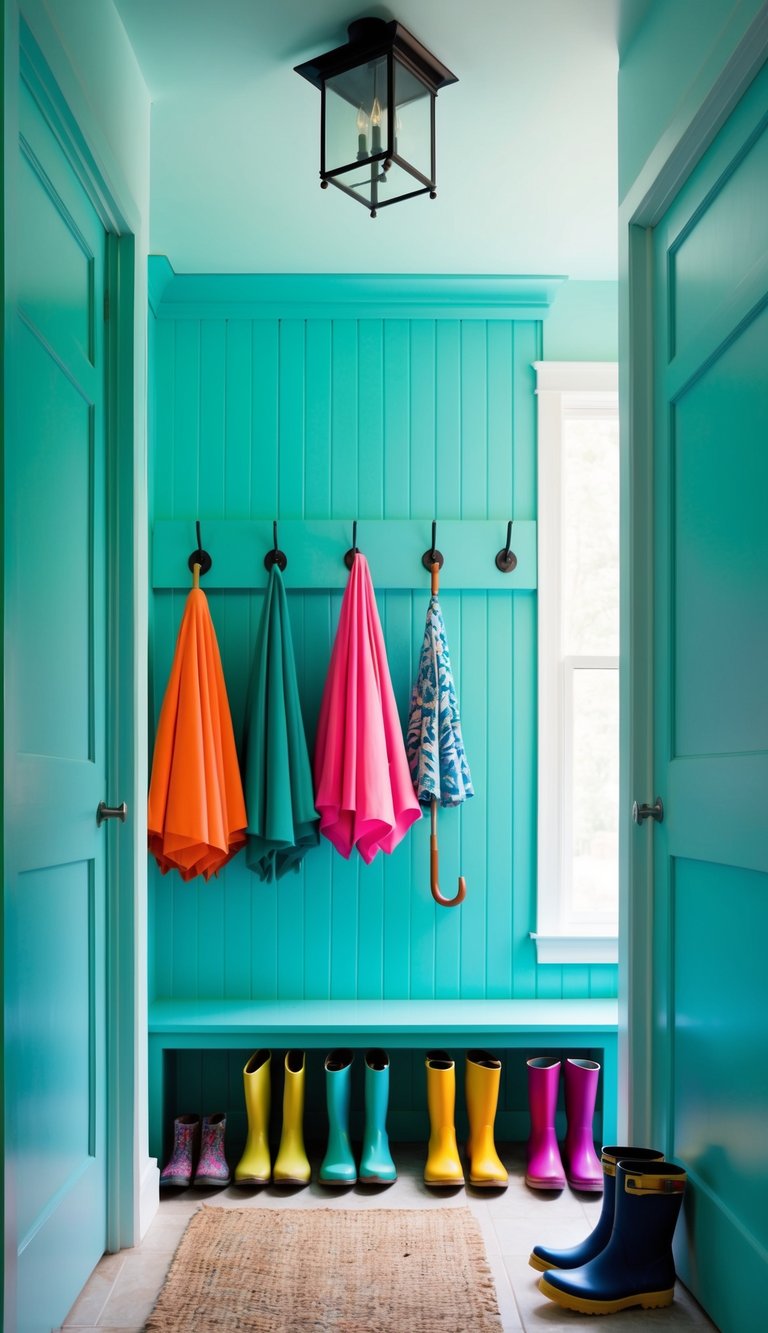
Want to make your mudroom feel like a cheerful retreat instead of just a dirty drop zone? Bright aqua might be your perfect pick! This vibrant blend of blue and green brings energy and personality to any space.
Aqua colors like Behr Marquee Aquifer create that perfect balance between blue and green tones. They add a coastal vibe that can make even the most mundane room feel special.
These bright shades are surprisingly practical too. They help hide some dirt while still looking clean and fresh. Plus, aqua works well with many other colors, making it easy to coordinate with the rest of your home.
For a more subtle approach, try lighter aqua shades that lean toward seafoam. Or go bold with deeper aquas that make a real statement when you walk through the door.
Pair aqua walls with white trim and natural wood elements for a balanced look. You might even add some beach-inspired accessories to complete the coastal feel.
Remember that good lighting will help show off your aqua walls at their best. The color changes beautifully throughout the day, giving your mudroom different moods from morning to evening.
9) Muted Lavender for a Calming Effect
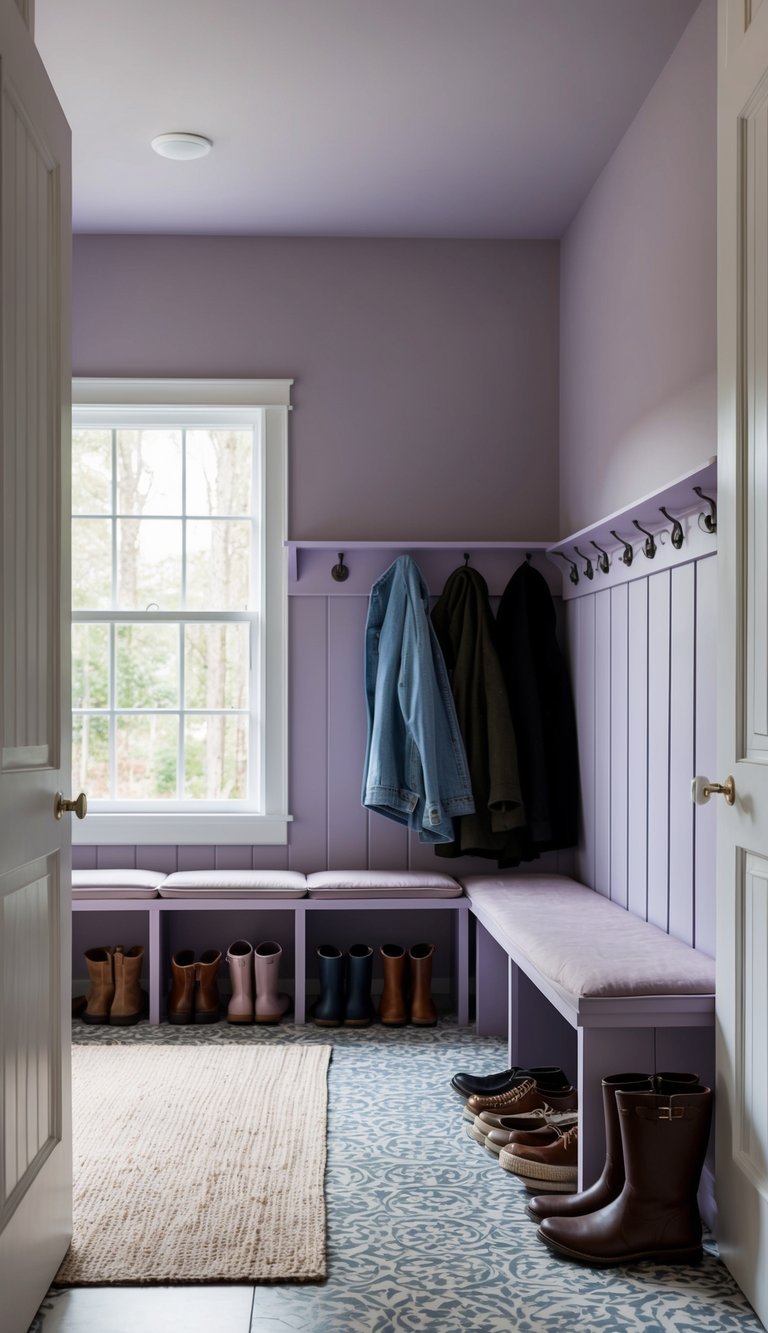
Muted lavender is a perfect choice for your mudroom if you want a space that feels peaceful when entering your home. This soft purple shade is a refined alternative to gray and brings a gentle, soothing vibe to the room.
Unlike bold purple tones, muted lavender creates a subtle backdrop that won’t overwhelm your senses. It’s especially nice in mudrooms that don’t get a lot of natural light, adding warmth without making the space feel dark.
You can pair muted lavender with navy blue accents for a sophisticated look. For something unexpected, try combining it with tangerine or emerald green touches through your mudroom hooks, benches, or storage baskets.
This color works well in both modern and traditional homes. Think of it as a grown-up purple that still has personality but doesn’t scream for attention.
For the best effect, choose a lavender with gray undertones rather than a bright pastel. This ensures your mudroom feels calming rather than childish, creating the perfect transition space between the outside world and your home.
10) Olive Green for Earthy Tones

Olive green brings a comforting, earthy richness to your mudroom. This natural color creates a warm welcome while hiding dirt and scuffs that are common in high-traffic areas.
You can pair olive green with wood accents to enhance its natural vibe. The combination creates a seamless transition from outdoor spaces into your home.
This color works well with many decor styles from rustic farmhouse to modern. It provides a sophisticated backdrop that doesn’t overwhelm the space.
For contrast, try adding cream or beige accents to brighten the room. Metal hooks in brass or matte black stand out beautifully against olive green walls.
If you’re worried about the space feeling too dark, paint just one accent wall in olive green. This gives you the earthy tone without making the mudroom feel smaller.
Olive green also pairs perfectly with other natural elements like wicker baskets or stone flooring. These combinations enhance the outdoorsy, grounded feeling that makes a mudroom feel functional and stylish.
Understanding Color Psychology
Paint colors do more than just decorate your mudroom—they can actually change how you feel in the space. The right color can make your mudroom feel welcoming after a long day or energizing as you head out the door.
How Colors Affect Mood
Yellow tones can bring happiness and energy to your mudroom. These sunny shades create a welcoming entrance that might boost your mood when you come home after a rainy day.
Deep blues tend to create calm feelings, helping your mudroom become a peaceful transition space between the outside world and your home.
Red and orange shades add excitement and warmth. These colors can be perfect if you want your mudroom to feel lively and energetic.
Green tones create a natural connection between outdoors and indoors. They’re especially good for mudrooms since they hide dirt while creating a fresh, clean feeling.
Neutral colors like beiges and grays offer tranquility. They create a blank canvas that won’t overwhelm you when you’re rushing in or out.
Choosing Colors for Small Spaces
In smaller mudrooms, light colors make the space feel bigger. Whites, soft yellows, and pale blues can open up tight areas and make them feel less cramped.
Consider using color on just one wall if your mudroom is tiny. This accent wall adds personality without making the space feel closed in.
Cool tones like light blues and greens can make narrow mudrooms feel wider. These colors seem to recede, creating an illusion of more space.
Glossy finishes reflect light and can help brighten dark mudrooms. Just be careful not to use them on walls with imperfections, as the shine will highlight bumps.
For low ceilings, painting them a lighter shade than your walls can make the room feel taller. This simple trick helps your mudroom feel more open and airy.
Tips for Choosing the Perfect Paint Color
Selecting the right paint color for your mudroom goes beyond just picking something you like. The color should be practical for a high-traffic area while also creating the mood you want.
Testing Paint Samples
Always test paint samples on your mudroom walls before committing. Buy small sample cans of your top 3-4 color choices and paint 2-foot squares on different walls. This helps you see how the colors look in your actual space.
Look at the samples at different times of day. Morning light versus evening light can dramatically change how a color appears. A soft green might look vibrant in morning sun but muted in evening shadows.
Take photos of the samples to review later. This gives you perspective when you’re not standing in the room. Don’t rush the decision – live with the samples for at least 48 hours before making your final choice.
Considering Lighting and Space
Your mudroom’s lighting and size greatly impact how paint colors will look. In small mudrooms with limited natural light, lighter colors like pale grays or soft yellows can make the space feel bigger and brighter.
If your mudroom gets plenty of sunlight, you have more flexibility. Deep colors like navy or forest green can add drama without making the space feel cramped.
Consider the direction your windows face. North-facing rooms get cooler light, so warm colors like taupe or butter yellow can balance this effect. South-facing rooms already have warm light, so cool colors like sage green work well here.
Don’t forget about your artificial lighting. LED lights versus incandescent bulbs can dramatically change how paint colors appear in the evening.

